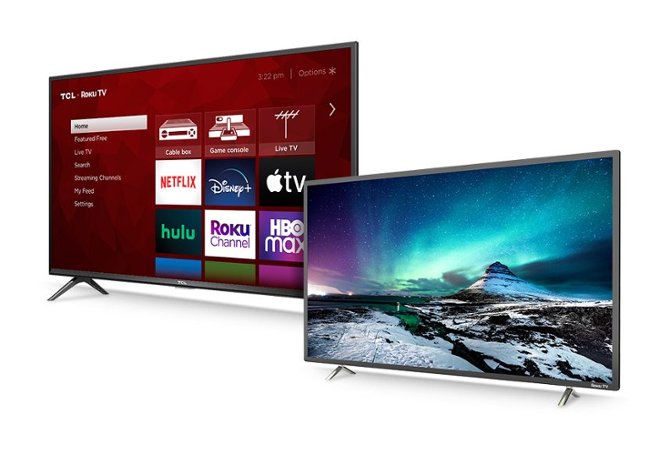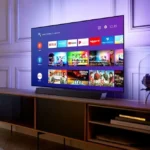Introduction
In the ever-evolving landscape of television technology, consumers today face a plethora of choices when it comes to selecting the perfect TV for their needs. The decision often boils down to two main categories: Smart TVs and Traditional TVs. This comprehensive guide aims to delve deep into the differences, advantages, and disadvantages of each, helping you make an informed decision that aligns with your lifestyle and preferences.
1. Understanding the Basics
Before diving into the comparison, it’s essential to understand what defines a Smart TV and a Traditional TV.
Traditional TVs: These are the conventional televisions that have been around for decades. They primarily serve the purpose of displaying content from external sources such as cable boxes, satellite dishes, DVD players, and gaming consoles. They do not have internet connectivity or built-in apps.
Smart TVs: Smart TVs are the modern evolution of televisions. They come with built-in internet connectivity and a range of pre-installed applications that allow users to stream content directly from the internet. This includes popular streaming services like Netflix, Hulu, Amazon Prime Video, and more. Smart TVs often come with additional features such as voice control, smart home integration, and screen mirroring.
2. Key Features Comparison
2.1 Connectivity and Content Access
Traditional TVs:
- Limited Connectivity: Traditional TVs require external devices to access content beyond live TV broadcasts. This includes cable/satellite boxes, DVD/Blu-ray players, and streaming devices like Roku or Chromecast.
- No Internet Access: They lack built-in internet connectivity, so you cannot stream content directly or browse the internet.
Smart TVs:
- Built-in Internet Access: Smart TVs come with Wi-Fi or Ethernet connectivity, allowing you to connect to the internet directly.
- Streaming Apps: Pre-installed apps provide direct access to popular streaming services. You can watch movies, TV shows, and even live TV without needing an external device.
- Web Browsing: Some Smart TVs include web browsers, enabling users to surf the internet directly from their TV.
2.2 User Interface and Experience
Traditional TVs:
- Simple Interface: Traditional TVs have a straightforward interface, primarily controlled by a remote. Navigation is limited to switching channels and accessing external inputs.
- Manual Setup: Setting up a Traditional TV requires manual connection of external devices and often involves navigating through input settings.
Smart TVs:
- Intuitive Interface: Smart TVs offer a more advanced and user-friendly interface, often with customizable home screens and app layouts.
- Voice Control: Many Smart TVs support voice assistants like Google Assistant, Amazon Alexa, or built-in voice control, making it easier to search for content and control the TV.
- Automatic Updates: Smart TVs receive software updates, improving functionality and adding new features over time.
2.3 Picture and Sound Quality
Traditional TVs:
- Standard Quality: Picture and sound quality depend on the model and technology used. While some traditional TVs offer excellent quality, they generally lack advanced features like HDR (High Dynamic Range) and Dolby Atmos found in modern Smart TVs.
- Limited Customization: Adjustments for picture and sound settings are often basic compared to the extensive customization options available in Smart TVs.
Smart TVs:
- Advanced Technology: Smart TVs usually come with the latest display technologies, including 4K Ultra HD, HDR, and OLED/QLED panels, offering superior picture quality.
- Enhanced Audio: Many Smart TVs include advanced audio technologies such as Dolby Atmos for an immersive sound experience.
3. Pros and Cons
3.1 Traditional TVs
Pros:
- Cost-Effective: Generally cheaper than Smart TVs, making them a good choice for budget-conscious consumers.
- Simplicity: Easier to set up and use, especially for those who do not need advanced features.
- Reliability: Fewer software issues as there are no apps or internet connectivity to manage.
Cons:
- Limited Functionality: Lack of internet connectivity means no access to streaming services or online content without additional devices.
- Outdated Technology: May not support the latest display and audio technologies.
3.2 Smart TVs

Pros:
- Convenience: Direct access to streaming services and apps without needing extra devices.
- Advanced Features: Superior picture and sound quality with support for the latest technologies.
- Integration: Seamless integration with other smart home devices and voice assistants.
Cons:
- Higher Cost: Typically more expensive than Traditional TVs.
- Complexity: More features can mean a steeper learning curve and potential software issues.
- Privacy Concerns: Smart TVs can collect data on viewing habits and may pose security risks if not properly managed.
4. Use Cases and Suitability
4.1 Traditional TVs
Best For:
- Budget Buyers: Those looking for a cost-effective option.
- Minimalists: Users who prefer a straightforward TV without additional features.
- Secondary TVs: Ideal for use in less frequently used rooms like guest rooms or kitchens.
4.2 Smart TVs
Best For:
- Tech Enthusiasts: Individuals who enjoy the latest technology and advanced features.
- Streamers: Users who frequently watch content from streaming services.
- Smart Home Users: Those with other smart home devices seeking integration and control through their TV.
5. Buying Guide
5.1 Traditional TVs
Considerations:
- Size and Resolution: Choose a size that fits your space and a resolution that meets your viewing needs.
- Inputs: Ensure there are enough HDMI and other inputs for your devices.
- Brand and Reviews: Research reputable brands and read customer reviews to ensure reliability.
5.2 Smart TVs
Considerations:
- Operating System: Different brands use different operating systems (e.g., Roku TV, Android TV, Tizen, webOS). Choose one that you find user-friendly.
- App Availability: Check if the Smart TV supports the streaming services and apps you use.
- Future-Proofing: Look for features like 4K, HDR, and HDMI 2.1 to ensure your TV remains relevant as technology advances.
6. Transitioning from Traditional to Smart TV
If you currently own a Traditional TV and are considering upgrading to a Smart TV, here are some steps to help with the transition:
- Evaluate Your Needs: Assess how often you use streaming services and other smart features to determine if the upgrade is worth it.
- Research: Look into different Smart TV models and their features to find one that suits your preferences.
- Budget: Set a budget considering the higher cost of Smart TVs and look for sales or discounts.
- Setup: Plan for the setup process, including connecting to the internet and signing into your streaming accounts.
7. Future Trends in Television Technology
Television technology continues to evolve rapidly, and staying informed about future trends can help you make a more future-proof choice.
Artificial Intelligence (AI): AI is being integrated into Smart TVs to enhance user experiences with personalized content recommendations and improved voice control. 8K Resolution: While still in its early stages, 8K TVs are becoming more prevalent, offering even higher picture quality than 4K. Foldable and Rollable Displays: Innovative display technologies are emerging, allowing TVs to be more versatile and space-efficient. Improved Connectivity: Advances in internet speeds and 5G technology will further enhance streaming quality and smart features.
Conclusion
Choosing between a Smart TV and a Traditional TV ultimately depends on your individual needs, preferences, and budget. Traditional TVs offer simplicity and cost savings, making them suitable for those who do not require advanced features. On the other hand, Smart TVs provide convenience, superior quality, and a wealth of features that cater to tech-savvy users and those who enjoy streaming content.
By considering the key differences, pros and cons, and your specific use cases, you can make an informed decision that enhances your viewing experience and fits seamlessly into your lifestyle. As television technology continues to advance, staying informed about the latest trends will ensure you make a choice that remains relevant and enjoyable for years to come.



